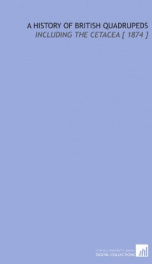a history of british reptiles

INTRODUCTION. THE Reptilia constitute a class of vertebrated animals of which thc structural characters are as follo v -They have cold bloot1,-that is to say, their power of producing anirnd hest is so limited as scarccly to be appreciable, and not suficient, therefore, to keep up any standard temperature of the body, nor to prevent it from following all the thermal varia tions of the atmosphere or water by whicli they are sur rounded. The integument is covered with hard and dry cuticle in various modifications of form, in some constituting broad plates, in others imbricated scales. The hcart is in all casrs trilocular,-that is to sagr, it is eomposcd of two auricles and n single ventrrcle thc respiration is exclusively pulmonary throughout life, and their reproduction is oviparous. The AmphiAia, or balrachia, which are included in the Reptilia by Cuvier and many othcr naturalists, differ from them, how ever, in various essential and important dlu cters. The heart particularlyis bilocular. The integumcnt isnakcd, sndthc respiration is carried on by means of bmnchiz during the earlier ycriod of life, clianging in some totally, and in others partially, to the pulmonary character in the adult condition. Thc Keptilia, according to most nsturalists, include five orders thc Testudinata, or Tortoises and Turtles thc Ena-Eiosauria of Conybearc, to mhicli the gigantic fossil genera, tllc Ichtl yosaurus ant1 Plcsiosaurus belong the Loricata, or CIO vcodiles aid Alligators the Saurk, or Lizard tribc, and the Ophidia, or Serpcn ts. There is no other class of verkebrated animals tlic different groups of which are forincd upon types of structure direring so essentially from cach otlier as thesc. Tlic ragle and the l umming-bird, thc ostrich and the petrcl, widcly as they appear to be sepmted From each otlier, not by size only, but by form and baliits, still cxhibit the satne gcncral structure of the sltcleton, of the organs of digestion and motion, of the integument, and, in fact, of tllc whole organization of the body,-thc various systcms of wliich differ only amongst the different groups by comparative degrees of developcmcnt. Even amongst thc Rlarnmalia, the whalc with its cnormous and almost mountainous bulk, paddlcd tbrough thc dccpcst retreats of occan by its short fins, which are modifications of thc antcrior extremities, and by that broad expandcd oar, its fleshy tail,-is still formcd upon the samc general plan of organization, as the littlc liglit and agrial bat, whicll flits so rapidly through thc regions of air, supported by its thin membranous wings, which are expanded upon slight and lineas fingers, the reprcscntativcs of the same bones, rvhicl in the former animal are contracted into a mas sivc and shapeless fin. Nor is there in the othcr organs of the body anj rnorc considerable difference of dcvdopcmant. But in thc prescnt class, the discrepancies are far morc conspicuous, particularly in the wholc constitution of the skc-Icton, in the organs of motion, in the integuments, and many other important portions of their organimtion... --This text refers to an alternate Paperback edition.
Info about the book
Author:
Series:
Unknown
ISBN:
1286000815
Rating:
5/5 (5)Your rating:
0/5
Languge:
English
Users who have this book
Users who want this book
What readers are saying
What do you think? Write your own comment on this book!
write a commentif you like a history of british reptiles try:
Do you want to read a book that interests you? It’s EASY!
Create an account and send a request for reading to other users on the Webpage of the book!



